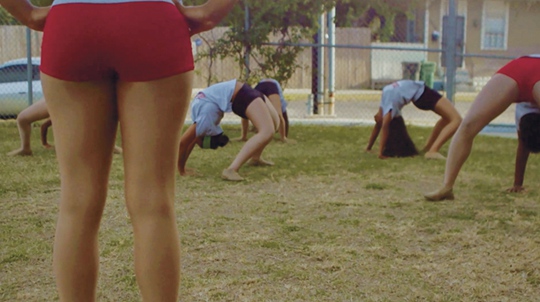GIRLS
| July 8, 2015 | Post In 2015年6月号

Courtesy the artist
In 1995, Japan’s legendary Nobuyoshi Araki awarded a prize to a 17-year-old photographer, a rising star who called herself Hiromix. He praised her work: “Girls tend to hold nothing back, and don’t think too much. Without thinking too much, they let their feelings rule their actions.” This was likely meant as a compliment, but it highlights some of the paradoxes women artists face—particularly young ones.
Hiromix became an overnight sensation as the figurehead of “girl photography,” a style characterized by shooting on cheap, 35mm cameras (often disposable) and focusing on intimate scenes that were rarely a subject for serious (male) photographers. Composition, exposure, even focus were less important than spontaneity and authenticity. This was also true of the snapshot aesthetic of Larry Clark and Nan Goldin, but Hiromix and the girl photographers of her era pioneered a self-consciously titillating innocence that both catered to and subverted the male gaze.

Courtesy the artist
Twenty years later, contemporary art star Petra Collins is utilizing the tropes of girl photography to go far beyond it. One can trace the lineage from Hiromix via Ryan McGinley, our reigning documentarian of youth—Collins became a muse and model in his work. Born in Toronto, Collins began taking photographs at 14 and, by 19, was casting director to Richard Kern, staff photographer for Rookie Magazine (created by fellow wunderkind Tavi Gevinson), and shooting and curating her all-female collective The Ardorous (essentially a girl photography gang). On film she captures the world of teenage girls: playing dressup in laundry-strewn bedrooms, applying makeup in badly lit mirrors, making out at prom, half-naked in the wilderness. Snapping teens in their natural habitats or conjuring cinematic fantasies of youth, Collins’s images are saturated with a dreamy, retro quality and an unabashed sensuality that stops just short of the erotic.
But Collins’s work is deceptively delicate. A t-shirt she designed for American Apparel—a drawing of a menstruating vagina—was instantly reviled, and her Instagram account was censored when she posted a photo of herself in a bikini with an unshaven bikini line. Both of these were intentional provocations to grapple with the female body and its coming of age in the social space of the internet. She has recently branched out into filmmaking: Drive Time is a luminous ode to the creative girl lifestyle in Los Angeles (sponsored by clothing brand COS), while Making Space is a three-part documentary about dancers (mostly young women of color) in small town America. Commissioned by clothing brand BB Dakota, it’s striking for the simple fact of its subject matter: girls in motion. The static images of girl photography, however self-aware, are easier to fit into existing narratives and power structures. These girls popping, locking, stepping, twirling, and freestyling suggest a space where girl actions are just as important as girl feelings.


